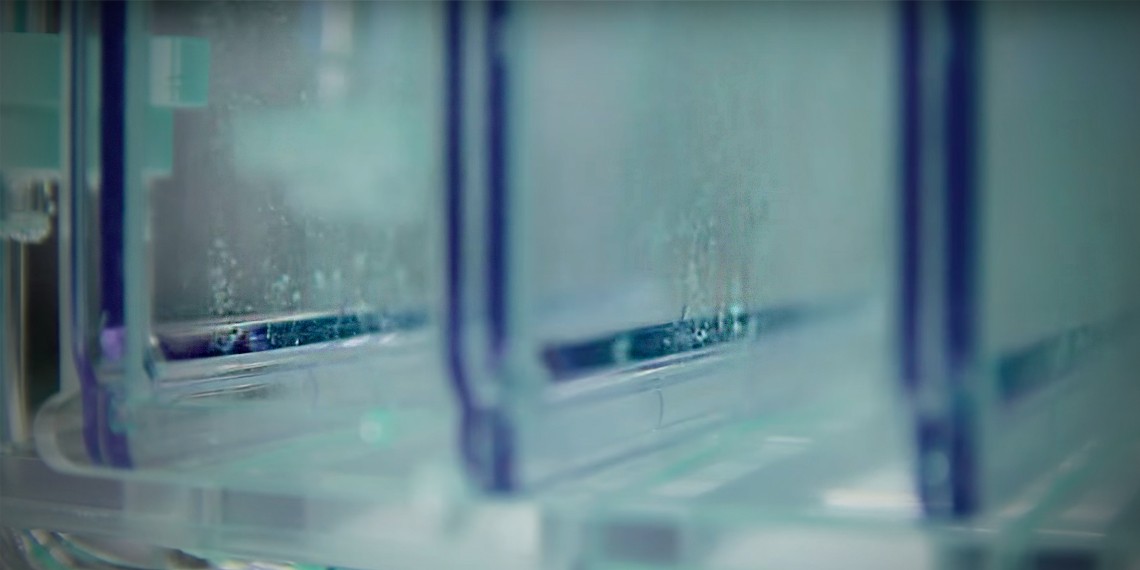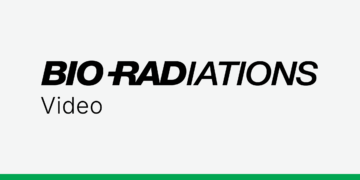Despite the fact that antibodies are one of the most frequently used tools in life science and clinical research, there are no universally accepted guidelines to ensure that they have been properly validated. This is partly due to a lack of systematic rigor on the part of companies supplying antibodies. Remarketing and reselling antibodies is common practice, but there are no uniform established standards to ensure that the antibodies being sold do what they are supposed to do—bind specifically to the target under specific conditions.
A 2008 study found that of the approximately 5,400 antibodies tested from 29 vendors, only about half performed per their intended use (Berglund et al. 2008). Since researchers often test multiple antibodies before finding the one that best suits their needs, they usually compare antibodies from various suppliers. If suppliers do not carry out rigorous testing to ensure that their antibodies behave the way they are supposed to, then that responsibility falls on the researcher. The problem is that most of the time scientists are not aware that the antibodies they are buying have not been tested. So, if their experiments fail, they spend time and effort trying to optimize their experimental process, not checking whether their antibody could be at fault.
Furthermore, due to current repackaging practices, which don’t always include proper documentation from the supplier, scientists could purchase the same antibody from two different suppliers and not even realize it. Hence, in addition to the time and effort wasted testing the same antibody, they are also wasting money. To this end, antibody industry discussions are trending toward having distinct validation requirements for antibodies used in specific applications. Vendors, academics and pharma researchers are all invested in improving the standards and are motivated to reach a consensus (Baker 2015).
Overall, the practice of remarketing and reselling antibodies is not the problem. If vendors did their due diligence and followed a set of standardized validation guidelines to systematically validate the antibodies they sell using specific quantitative measures, the reproducibility of data and the level of confidence in that data could be elevated.
Issues Facing Researchers
Antibody manufacturers often specialize in developing antibodies for particular antigens. Their goal is to make the best antibody possible. They usually sell to suppliers rather than directly to consumers. This business practice allows researchers to go to one supplier and search for many different types of antibodies.
Antibody suppliers, in contrast, often purchase the antibodies they sell rather than manufacture them themselves. They do sell directly to consumers. Sometimes, suppliers simply relabel antibodies from another manufacturer without adding anything of value, such as validation data or protocols, so there is no way for the user to tell where the antibody originally came from or how it was tested. This practice is prevalent throughout the antibody market. However, a number of problems have come to light as a result of this arrangement.
- Suppliers change manufacturers all the time but don’t always change the labeling on the antibodies they are selling. They update the lot number, which is the only indication that something has changed. As a result, researchers buy the antibody they have always bought but sometimes find that the new antibody does not work as well as it used to. However, they have no idea that anything has changed and so do not consider their antibody as a possible issue during their troubleshooting experiments
- Researchers tend to test antibodies from several different vendors in order to determine which has the best specificity for their needs. But because each supplier adds its own label to the antibodies it sells, researchers may unwittingly order the same antibody from different vendors, resulting in wasted time and money
- Trial-size vials of antibodies greatly benefit laboratories, especially those with limited budgets, as they provide researchers with the ability to test multiple antibodies at a fraction of the cost of full-size antibody vials. However, because suppliers often purchase their antibodies wholesale from manufacturers, many do not offer trial sizes
- Some suppliers dilute antibodies they purchase in order to keep the number of applications per vial consistent. This not only permits the introduction of impurities into the sample but ends up costing the customer more per microgram of antibody
- If a supplier has inadequate or no quality control for every lot, they might rely solely on the manufacturer for antibody validation. This can prove to be a major issue when a researcher encounters a bad lot and requires critical support (lot-specific QC data and protocol tweaks) to pinpoint the source of the problem. The supplier will not have the information readily available to support the scientist’s needs, which can result in a lack of trust. In addition, if a seller does dilute an antibody or adds BSA to the solution, the final product can behave differently than the originally manufactured antibody. Under these circumstances, lot data from the original manufacturer would still not help the scientist
As a result, approximately $350 million is wasted annually in biomedical research in the U.S. in materials, time and money due to the unreliability of antibodies (Bradbury and Plückthun 2015).
What Can Antibody Suppliers Do
The onus of supplying reliable antibodies—that is, antibodies that have been tested for their specificity, selectivity and reproducibility—should fall on the supplier. Suppliers should test their antibodies in-house, using clear, measurable parameters, before selling them, so that they are able to provide researchers with accurate conditions for use and detailed step-by-step directions.
They should be able to stand behind their products and provide researchers with proper validation data and, when needed, in-depth troubleshooting tips. Furthermore, by testing every antibody lot, suppliers will be able to eliminate quality control and reproducibility issues.
One supplier that is working to improve this process is One World Lab. OWL represents manufacturers and their unique products with transparency to eliminate duplicitous testing of the same antibodies with different labels. Their system of offering trial-size antibodies enables scientists to make custom panels from the catalogs of multiple manufacturers and carry out blinded validation studies before deciding which antibody works best for them.
In addition, OWL helps limit the cost and time associated with validating antibodies by allowing researchers to search OWL’s aggregated catalog using a variety of filters, including original manufacturer, and by providing researchers with the opportunity to submit their own validation data and share their protocols/experiences. The contributions in OWL’s review section help to increase the amount of information available for a particular antibody. This could help other researchers working on similar protein targets and applications, because OWL also allows scientists to buy multiple unique trial-size antibodies against the same target in order to validate them with this confirmatory approach. These data are shared at the discretion of the scientist. OWL’s overall goal is to become a liaison and interaction platform for antibody providers and scientists.
What Can Researchers Do
While the responsibility for providing reliable, validated data should fall on antibody suppliers, researchers have a part to play as well. First, researchers should make sure that validating antibodies is a part of their experimental process. Though this may seem obvious, a recent survey showed that a third of junior scientists (less than five years of experience) do not carry out any form of antibody validation (Freedman 2016). Carrying out their own tests is likely to make researchers more willing to question the validity of their antibodies and demand more from antibody suppliers.
Before making a purchasing decision, researchers should be aware of the potential issues that exist and do their due diligence by evaluating the antibody information/data provided by suppliers. Even if some suppliers don’t provide their own validation data, they could provide validation data from the original manufacturer.
By reviewing and comparing this information with vendors who do provide detailed protocols and data, researchers will at least be able to tell if they are purchasing the same antibody from different suppliers, which might help mitigate some of the time and cost of their antibody validation process. Furthermore, researchers could push back and insist on receiving validation data and protocols from suppliers prior to purchasing antibodies and avoid vendors that don’t offer these data, which could save those researchers time, money and a lot of headaches.
Additionally, discourse about antibody validation is ongoing, so researchers should keep up to date with key information, which could help them find antibodies that deliver results and, more importantly, avoid antibodies that are known to fail. One method that has been suggested for this is a scoring system based on antibody quality and reliability (Baker 2016).
Another way that researchers could help the process is by raising awareness of the issues that currently exist and by getting involved. A lot of information about lack of antibody specificity has come to light over the past 15 years. A number of proposals have been put forward (Bordeaux et al. 2010, Uhlén et al. 2016) and some portals established, including Antibodypedia (Bjorling and Uhlén 2008) and EuroMAbNet (Roncador et al. 2016), to try and find some way to formulate standards and guidelines for antibody validation practices. A recent antibody validation summit presented by the Global Biological Standards Institute and The Antibody Society brought together academics, pharma researchers, antibody vendors, funding agencies and journals in an effort to develop standards, policies and practices for antibody validation. In addition, OWL is a portal where scientists who have validated antibodies can share their data, protocols and tips/tricks with others looking for antibodies to the same target protein or for similar applications.
Conclusion
Remarketing and reselling antibodies is common practice and isn’t going away anytime soon. In order to mitigate the issues that have arisen due to this practice, it is vital that suppliers take ownership of the antibodies they are selling and validate them themselves instead of relying on data from the original manufacturer.
In addition, it is important for researchers to realize that the antibodies they use are not always validated and to start demanding such information from suppliers. Also, using available resources to acquire third-party validation data can provide the crowdsourced characterization necessary to cull bad antibodies and highlight good ones.
Antibodies are essential to the life-sciences and clinical research fields. Suppliers and researchers are going to have to work together to ensure that the research being carried out is trustworthy and is helping to improve overall data quality.
References
Baker M (2015). Reproducibility crisis: blame it on the antibodies. Nature 521, 274–276.
Baker M (2016). Biologists plan scoring system for antibodies. nature.com/news/biologists-plan-scoring-system-for-antibodies-1.20712, accessed October 18, 2016.
Berglund L et al. (2008). A genecentric Human Protein Atlas for expression profiles based on antibodies. Mol Cell Proteomics 7, 2,019–2,027.
Bjorling E and Uhlén M (2008). Antibodypedia, a portal for sharing antibody and antigen validation data. Mol Cell Proteomics 7, 2,028–2,037.
Bordeaux J et al. (2010). Antibody validation. Biotechniques 48, 197–209.
Bradbury A and Plückthun A (2015). Reproducibility: standardize antibodies used in research. Nature 518, 27–29.
Freedman LP (2016). [Letter to the Editor] The need for improved education and training in research antibody usage and validation practices. Biotechniques 61, 16–18.
Roncador G et al. (2016). The European antibody network’s practical guide to finding and validating suitable antibodies for research. MAbs 8, 27–36.
Uhlén M et al. (2016). A proposal for validation of antibodies. Nat Methods 13, 823–827.
See Bio-Rad’s Solution for Better Antibodies
Learn more about Bio-Rad’s solution for better antibodies.
First posted on ddn-news.com in February 2017.




